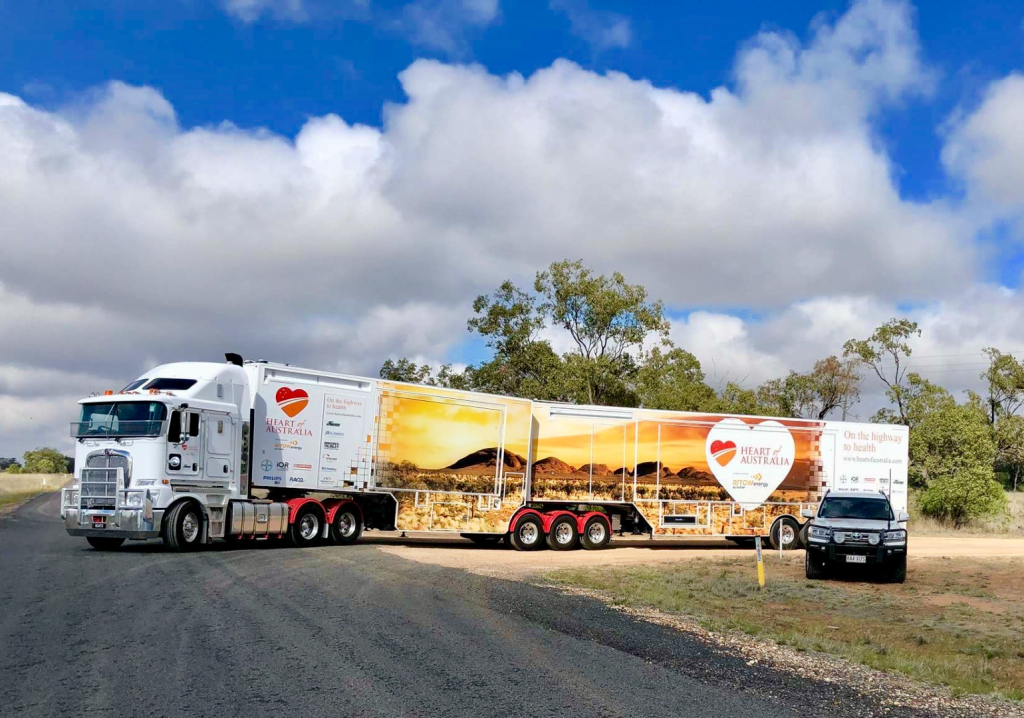This electrical engineer-turned-cardiologist has designed innovative ‘Heart Trucks’ that are bringing specialist healthcare to people in rural communities.
Electrical engineering and cardiology are not necessarily qualifications you might expect to find on the same CV, but this unique combination of skills has helped Dr Rolf Gomes create a world-first mobile medical service that provides access to specialist healthcare and diagnostics in rural and remote communities throughout his home state of Queensland.
Gomes is the founder and director of Heart of Australia, and holds degrees in electrical engineering from the University of Melbourne and advanced cardiology from the University of Queensland.
After working for several years for a Melbourne-based petrochemical company, Gomes realised his real passion lay in working directly with people.
“While I enjoyed the technical and the intellectual aspect of engineering … if I was going to see myself doing something every day, it had to be with people,” he told create.
The introduction of a graduate medical program allowing individuals with an existing degree to shorten the usual six years of studying medicine to four was enough to steer Gomes towards his new profession.
Later, while working as a junior doctor in Queensland, the engineer-turned-cardiologist saw firsthand the difference in access to healthcare and services between Australians in regional and urban areas.
“[I’m] at the coalface, seeing the disparity in access to care for patients who turn up because they’d fallen off a quad bike and need an X-ray or CT scan, but there’s nothing around for 1000 km,” he said.
“[Sometimes I’d] read an ECG and think, ‘I’d really like a specialist’s opinion here,’ but [didn’t have] access to that specialist skillset. Having just come from a major metropolitan emergency department, the disparity in access to care was obvious.
“Rather than find myself in the middle of nowhere with just my stethoscope, it’d be good to have my whole toolkit, which for a cardiologist is a treadmill, an ultrasound machine and lung function testing machines.
“One of the things I always say is I’m very fortunate to have had an engineering education … it trains your mind to distill things down to the truth. As an engineer, you always have that solution-based mindset. How are you going to convert a vision into a reality?”

Clinic on wheels
Gomes’ solution was a custom-designed truck that could serve as a mobile medical health unit to deliver the specialist healthcare these rural and remote communities required.
“With that very simple idea, I thought, ‘Let’s explore how to accommodate the technology we need in a truck’,” he explained. “Again, that thinking is the mindset of an engineer who’s looking at a tangible solution to a problem.”
Gomes’ next steps were to research the Queensland Department of Transport and Main Roads’ guidelines for semitrailers, then — using the old-school technique of a tape measure and templates — calculate the dimensions of the various items of equipment, and how to package them.
“By looking up the size of the equipment, cutting out pieces of cardboard and making a rough drawing, we then took it to a trailer manufacturer and said, ‘This is what we need to fit in the truck. Let’s work on the floor plan.’”
Gomes says his background as an electrical engineer also came in handy when it came to working out the safest and most reliable system to power the various pieces of equipment.
“Our most recent truck, the fifth truck in the series, has the world’s first battery-operated CT scanner in the trailer,” Gomes said.
“With the learnings from the four previous trucks around the limitations of generators and around cooling and dust, we were able to build a battery-operated CT scanner which has done over 500 scans in its first year.
“It’s been driven to more than 70 sites, parked in the middle of nowhere, and it’s not plugged into any power source … I think that’s quite amazing.”
Gomes says his background as an electrical engineer also came in handy when it came to working out the safest and most reliable system to power the various pieces of equipment.
“Our most recent truck, the fifth truck in the series, has the world’s first battery-operated CT scanner in the trailer,” Gomes said.
“With the learnings from the four previous trucks around the limitations of generators and around cooling and dust, we were able to build a battery-operated CT scanner which has done over 500 scans in its first year.
“It’s been driven to more than 70 sites, parked in the middle of nowhere, and it’s not plugged into any power source … I think that’s quite amazing.”
Gomes explained that the CT scanner uses a lithium battery pack and that the roof of the trailer is lined with solar panels, but there’s otherwise “a lot of electrical cleverness” to how the power is managed.
“How do you [design] a CT scanner which draws 120 kW at peak load?” he said. “How do you provide that level of power when all you have is a 25 kW generator and batteries? A lot of batteries are limited by how much power they can discharge at any one time and how quickly, not necessarily how much they can store.
“The solution to that is a trade secret.”
He is currently in the process of patenting the technology, which was developed in partnership with technology provider Philips and radiology partner I-MED Radiology.
“It’s really opened how we can mobilise radiology and take that technology to rural and remote areas,” Gomes said.
Today, Gomes’ Heart Trucks deliver specialist healthcare to over 30 rural and remote communities across Queensland, and Heart of Australia has grown from three cardiologists to 28 specialists working across a range of disciplines, including endocrinology, neurology and gastroenterology.
Gomes estimates the service has seen close to 16,000 patients, saved “perhaps 600 to 700 lives”, and travelled more than 34 million kilometres at an average of 700 km per journey.
